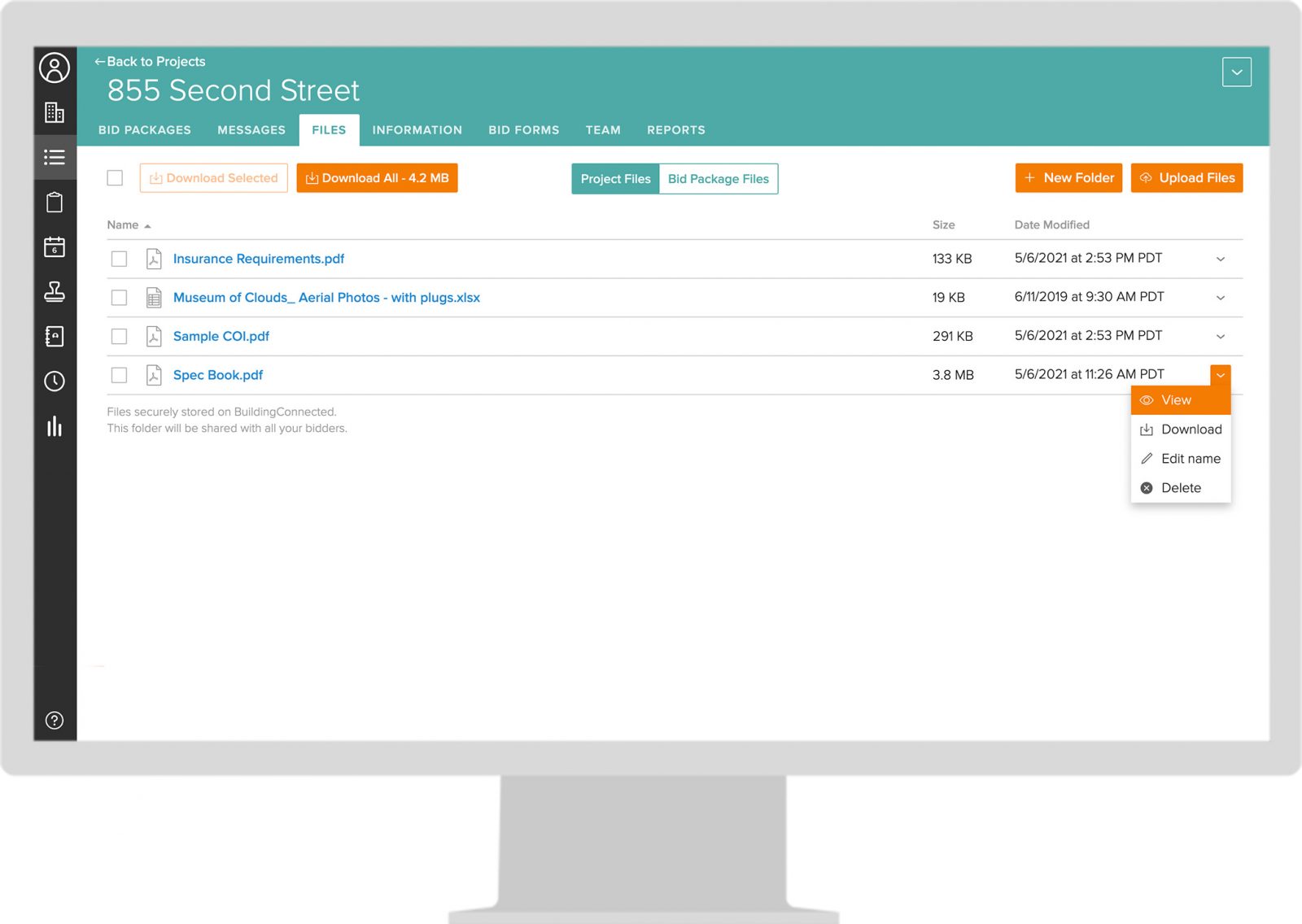
Since the official launch of our unified Autodesk Construction Cloud platform at the start of this year, our product teams have been rapidly rolling out new updates and features. Today, we are excited to share more than 30 releases and enhancements for Autodesk Construction Cloud products.
From new ways to standardize and improve the quality of your data to add-ins to improve model coordination and more, read on to learn about the latest product updates for Autodesk Construction Cloud.

*=features on both Autodesk Construction Cloud unified platform and BIM 360
Standards like ISO 19650 define the collaborative processes for managing information over the project lifecycle. Without a standardized document control process, teams waste countless hours looking for the most up-to-date information. Ensuring consistent document control is key to meeting project requirements and avoiding rework. With workflows that support our customers’ compliance of the ISO 19650 standard on both BIM 360 and Autodesk Construction Cloud platform projects, teams can efficiently configure, organize, and distribute documents across the project lifecycle.
Learn more about the ISO 19650 release in our latest blog.
The Template Library in Autodesk Construction Cloud’s unified platform simplifies and centralizes the process of creating company standards and ensures teams always have access to the most recent updates. With the ability to create templates and save them to existing projects, the Template Library increases the accuracy of inputted data which drives better decision making, reduces rework, and minimizes risk.
Learn more about the new library feature in our latest blog.
Both BIM 360 and Autodesk Construction Cloud unified platform users now have the ability to extract all Construction IQ data through the Data Connector. Construction IQ uses machine learning technology to continuously analyzes project data to identify areas of risk across the project lifecycle. Now users can combine the predictive risk analytics of Construction IQ with other critical project data and create custom dashboards in their own BI tool. This provides richer project analysis and the ability to analyze risks and develop best practices.
Paired with this release, users will also have access to a Construction IQ Power BI template to help teams start leveraging machine learning data to minimize construction risk.

*=features in both Autodesk Build and BIM 360
**=features in both Autodesk Build and PlanGrid
Both Autodesk Build and PlanGrid users can now benefit from a new set of languages (Swedish, Danish, and Portuguese) that are automatically recognized through our OCR (optical character recognition) technology. This will improve accuracy by eliminating human errors and automating the process, saving time and allowing field teams to quickly extract value from their drawings.
Autodesk Construction Cloud platform users now can archive completed or old projects. This allows teams to see more relevant information while still accessing information from past projects.
BIM 360 and Autodesk Build users with executive overview access can now drill down to project level cost details within the Executive Cost Dashboard. This improves transparency to cost information for executives to better plan and allocate resources.
Both BIM 360 and Autodesk Construction Cloud unified platform users can access additional integration partner cards through the card library. New cards include AOMS, FieldChat, CMiC, Eyrus, Plannerly, and Lobster Pictures.
Autodesk Construction Cloud unified platform users now have access to new ‘group by’ functionality for reports, including the Issue Summary Report, which can now be grouped by location, company, and category. This allows teams to easily view report data and save time by surfacing relevant information in a digestible format.
The new Sheets Log generates a spreadsheet with a list of sheets with all attributes, either for the entire sheet registry or a filtered list based on search or filter criteria provided. This report helps customers easily get access to all sheet versions and meta data for document control processes.
Autodesk Construction Cloud platform users now have access to download Sheets data using the Data Connector. This gives users more visibility into how teams are using drawings by looking at version history, sheet size, and who created and/or updated a sheet to visualize trends and improve decision making.
Photo references are vital pieces of information on forms. After this release, if a submitted or archived form had a photo reference, users won’t be able to delete that reference anymore.
Following the March update to the visibility of photos referenced in forms, now a photo referenced in an issue or RFI will also inherit the permissions of the respective issue or RFI, leading to improved control over data visibility.
On each project, Project Admins can configure RFI settings and choose whether or not to reopen closed RFIs. This ensures that RFI workflows adhere to company and project standards.
The latest Submittal enhancements for Autodesk Build helps to improve connectivity and ensure standardization by streamlining the submittal process. With these releases, reduce manual work, connect project information, and remove data silos by linking references and markups to submittal items.
Autodesk Build users can now reference Submittal items within meetings. This ensures that all relevant information is highlighted and shared at meetings.
Learn more about this month’s product releases specific to Autodesk Build in our blog.

The Issues Coordination Add-in for Navisworks connects VDC managers and trade partners to project team contributors in Autodesk BIM Collaborate’s Model Coordination module to better organize and respond to issues. With this round-trip workflow, issues are created in either Autodesk Construction Cloud or Navisworks, and are actionable in both, bringing the best of each environment to your next project.
The Issues Add-in for Revit locates and displays issues assigned in Autodesk Construction Cloud, simplifying design and constructability reviews across the entire project team. Use the add-in to view, resolve, and closeout Autodesk Construction Cloud issues through direct interaction with the Revit model (not yet supported in Design Collaboration module).
Spatial Model Alignment in Autodesk BIM Collaborate is an easy-to-use transform tool to ensure aligned models prior to any design review or model coordination processes. This tool enables designers, VDC managers, and trades to align their new or updated model with the aggregated model using a move, "call-to-place," rotate, or point-to-point action in addition to a manual coordinate input and copy function.
AEC teams can monitor changes to elements of the Revit model most important to them by creating “Watch Groups” in the Change Analysis tool. Teams are automatically notified when items in watch groups change throughout the project.
This workflow enables project leads and designers to stay informed on the most critical items they need to keep an eye on, saving time by eliminating tedious manual model queries and helping teams work smarter.

Estimating teams can now leverage project templates in Autodesk Takeoff to save time and improve standardization across their organization. Project templates enable estimating teams to streamline the process of creating takeoffs faster and more efficiently to generate competitive bids than having to start projects from scratch.
Users can now select a scale from a standard list.

Pype Closeout users can now utilize an expanded toolset to design the cover page, slipsheets, and table of contents of their turnover packages. Tools include fonts, text boxes, images, logos, watermarks, and more. These designs can be saved as company themes by the company admin, allowing organizations to standardize their turnover packages to easily stay within the organization’s branding. These are valuable to users as it helps to solidify trust in the user for their clients and increase the chance of repeat business.
Learn more about Turnover Package Designer release in our latest blog.

Users can save time viewing files directly in the app platform instead of downloading files.
Users can now select individual or all opportunities (on a given page) to decline or archive. This helps with decluttering the Bid Board for easier bid management.
Users can create or upload folders for better file management in the Internal Files section.

With the launch of activity logs in Assemble, project stakeholders can get clear insight into project activities for improved accountability and transparency across teams. Assemble users can easily view the list of activities with details around the action, users initiating the action, and the time stamp. This enhancement drastically improves collaboration among team members working on the same project.

Users will now be able to add optional or required signatures anywhere within a checklist section, and signatures for the whole checklist will become "final sign-off.” This will bring more accountability and control to any workflow that uses checklists.
Admins can now export multiple checklist templates at once, which will significantly speed up their process.
In addition to the preset dashboards in the Insight module, BIM 360 users can now create custom dashboards and share them by role, company, or user. This improves collaboration and sharing of relevant project information for specific teams or project meetings as well as gives customization tools for teams to build more meaningful and relevant dashboards.
BIM 360 users now have access to download Transmittal data using the Data Connector. This gives users more visibility into the flow of documents across project teams to better understand where to make improvements on how documents are transferred.

May we collect and use your data?
Learn more about the Third Party Services we use and our Privacy Statement.May we collect and use your data to tailor your experience?
Explore the benefits of a customized experience by managing your privacy settings for this site or visit our Privacy Statement to learn more about your options.